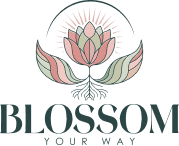Your body houses millions of microscopic gardens—each cell containing up to 6,000 tiny powerhouses that generate energy at rates that would make the sun blush. These cellular gardeners, called mitochondria, convert oxygen and nutrients into life force with breathtaking efficiency [1]. Like seeds scattered throughout rich soil, an average of 1,500 mitochondria flourish in each cell, orchestrating the dance of vitality that keeps you alive [14].
Yet when these cellular gardens struggle, your entire ecosystem feels the strain.
Brain fog that won’t lift. Muscles that ache without reason. Energy that drains faster than water through sandy soil. These aren’t signs of a broken body—they’re whispers from tired mitochondria asking for nourishment [1]. Without these flourishing energy gardens, your cells can’t produce enough ATP—the currency that funds everything from building proteins to maintaining the delicate membranes that protect your cellular communities [15].
The beautiful truth? Your mitochondria are designed to thrive, not merely survive.
These remarkable organelles harness about 40% of the energy from every morsel you eat, converting it into pure cellular vitality [16]. When given adequate oxygen, they work 13 times more efficiently, like flowers opening wider in perfect sunlight [3]. Your body isn’t a machine requiring fixes—it’s a living ecosystem yearning to bloom.
Throughout this journey together, we’ll explore how to tend your cellular gardens with the same care you’d give a prize-winning rose. Your mitochondria are waiting to flourish again.
When Your Cellular Gardens Start to Wilt
Image Source: Dreamstime.com
Your body speaks in whispers before it screams. Mitochondrial fatigue happens when these cellular powerhouses can’t generate enough ATP to fuel your daily life—a bone-deep exhaustion that lingers even after rest [16]. This isn’t the tiredness that disappears with a good night’s sleep. It’s the kind that makes you wonder if you’ll ever feel vibrant again.
Your Body’s SOS Signals
I’ve learned to recognize these patterns in my journey and in the women I work with. Your mitochondria communicate distress through multiple channels simultaneously:
Brain fog and fatigue: Persistent mental cloudiness, memory lapses, difficulty focusing, headaches, and dizziness [3]. You know the feeling—walking into a room and forgetting why you came.
Muscle weakness: Unexplained soreness, whole-body fatigue, and exercise sessions that leave you depleted for days [3]. Your muscles feel like they’re working against molasses.
Digestive disruption: Loss of appetite, constipation, digestive disorders [3]. Your gut-brain connection struggles when cellular energy runs low.
Sensory changes: Blurred vision, tired eyes, and hearing difficulties [3]. Even your senses require cellular fuel to function optimally.
Research reveals that 62% of patients with mitochondrial disease report excessive symptomatic fatigue, while 32% experience severe, functionally limiting fatigue [16]. But here’s what matters: you don’t need a diagnosis to feel the effects of cellular energy depletion.
The Root of Cellular Exhaustion
Mitochondrial dysfunction unfolds through two distinct pathways [14]:
Primary dysfunction stems from inherited mutations in mitochondrial DNA, which lacks the protective mechanisms found in nuclear DNA [16]. Think of it as genetic vulnerabilities passed down through generations.
Secondary dysfunction emerges from life’s daily exposures [16]. Environmental toxins, certain medications, and accumulated oxidative damage gradually wear down these cellular powerhouses [13]. Coenzyme Q10 deficiency consistently correlates with fatigue symptoms [16].
While mitochondria naturally decline with age—potentially contributing to diabetes, heart disease, Alzheimer’s, and Parkinson’s [17]—emerging research suggests this deterioration may reflect lifestyle patterns rather than inevitable aging [18].
Your Daily Choices Shape Cellular Vitality
Every decision you make either nourishes or depletes your mitochondrial health:
What you eat matters deeply. High-fat diets heavy in saturated fats impair mitochondrial function [18]. Mediterranean eating patterns rich in polyphenols, whole grains, and omega-3 fatty acids support cellular energy production and reduce harmful oxidative stress [19].
Movement creates energy. Exercise increases both the number and size of mitochondria [6]. High-intensity interval training proves particularly effective, as younger adults experience a 49% increase in mitochondrial capacity, while older adults see an impressive 69% improvement [6].
Stress steals energy. Research examining 23 studies found that in 19 cases, stress decreased cellular energy production and altered mitochondrial structure [6].
Sleep restores balance. A study of identical twins revealed that short sleep duration and reduced sleep efficiency significantly decreased mitochondrial function [6].
These factors interweave like threads in a tapestry—improving one often enhances others, creating either upward spirals of vitality or downward cycles of depletion.
1. Nourish Your Cellular Gardens
Food isn’t just fuel—it’s medicine for your mitochondria. Every bite you take either feeds your cellular powerhouses or starves them. The science is precise: specific nutrients act as both building blocks and protective shields for these microscopic energy creators.
The Essential Nutrients Your Mitochondria Crave
Your mitochondria have particular appetites. Coenzyme Q10 (CoQ10) serves double duty as both an electron carrier in the energy transport chain and a potent antioxidant protecting mitochondrial membranes. This compound naturally declines with age, making dietary sources increasingly important. NAD+, oxygen, and intact mitochondrial membranes are equally crucial for proper functioning.
The most commonly used supplements for mitochondrial support include antioxidants such as vitamins C and E, electron donors like CoQ10 and riboflavin, and compounds that provide alternative energy sources, including creatine [35]. These nutrients help neutralize damaging free radicals produced during energy creation while supporting the electron transport chain.
Biochemistry matters here. We’re not talking about trendy superfoods—we’re exploring the precise nutrients your cells need to thrive.
Foods That Feed Your Energy Factories
Your grocery choices directly impact how well your mitochondria perform:
- Organ meats: Nature’s most concentrated source of CoQ10, with beef heart containing 11.3 mg and chicken liver 11.6 mg per 100 grams [6]
- Fatty fish: Mackerel provides approximately 6.75 mg CoQ10 per 100 grams [6]
- Nuts and seeds: Pistachios contain 2 mg and peanuts 2.6 mg CoQ10 per 100 grams [6]
- Leafy greens: Rich in chlorophyll, which maintains CoQ10 levels in the blood [1]
- Colorful berries: Supply antioxidants that reduce free radical damage [1]
Aim for at least five servings of vegetables and fruits daily, with a focus on dark leafy greens such as spinach, kale, and broccoli [1]. Your mitochondria will thank you with sustained energy that doesn’t crash mid-afternoon.
Why Omega-3s and B Vitamins Are Non-Negotiable
Omega-3 fatty acids create protective membranes around mitochondria, essentially building fortified walls that contain harmful free radical by-products [1]. Moreover, research shows that omega-3s influence how fat stem cells divide, promoting the formation of smaller, healthier fat cells that function more efficiently metabolically [11].
B vitamins serve as essential coenzymes for mitochondrial enzymes. Specifically, thiamine (B1) facilitates oxidative decarboxylation in the citric acid cycle, riboflavin (B2) supports flavoenzymes in the respiratory chain, and niacin (B3) helps synthesize NADH needed for oxidative phosphorylation [12].
Clinical evidence suggests that riboflavin supplementation enhances muscle strength, exercise tolerance, and motor abilities, while also reducing fatigue [35]. Consuming B vitamin-rich foods, such as leafy greens, nuts, beans, seafood, eggs, and high-quality meats, provides the fundamental building blocks for mitochondrial energy production.
Your body isn’t guessing what it needs—it’s asking for specific nutrients that science has identified as essential for cellular vitality.
2. Move Your Body Like the Living Ecosystem You Are
Movement isn’t just exercise—it’s the breath of life your cellular ecosystem craves. Like a gentle breeze that stirs a meadow into vibrant activity, physical movement awakens your mitochondria from their slumber and whispers to them: “Grow. Multiply. Thrive.”
How Movement Awakens Your Cellular Energy
Your muscles speak a language your mitochondria understand perfectly. When you move, your cells send urgent signals through pathways with scientific names like AMPK and p38 MAPK, but their message is beautifully simple: “We need more energy gardens here” [13].
These cellular conversations converge on PGC-1α, the master conductor of mitochondrial growth [13]. Think of it as your body’s head gardener, deciding where to plant new energy factories. The response is remarkable—exercise training can increase mitochondrial volume by an impressive 40-50% [14].
The movement also teaches your mitochondria to dance together more gracefully. It enhances their ability to join and divide, creating healthy networks that pulse with vitality [15]. Your cellular respiratory capacity also improves, allowing for clearer airways and deeper, more nourishing breaths [3].
The Rhythms That Restore Your Energy
Different movement patterns create different gifts for your mitochondria:
- Gentle, steady movement: Like spring rain, it encourages new mitochondria to sprout in your cells [16]
- High-intensity intervals: Acts like summer storms, enlarging your existing cellular powerhouses [16]
- Sprint intervals: Create the most dramatic improvements in how your cells breathe [3]
- Strength training: Builds the quality and resilience of your mitochondrial networks [16]
The beautiful surprise? Your cells respond quickly to this loving attention. HIIT and SIT can increase mitochondrial content by 25-35% in just 6-7 sessions [14]. Sprint intervals appear particularly effective, as they boost both PGC-1α and p53 content in muscle cells [13].
Finding Your Natural Movement Rhythm
Here’s what I’ve learned about sustainable movement: your body craves variety, not perfection.
Too much intensity without rest is like forcing a flower to bloom in winter—it simply won’t work [17]. Your mitochondria need time to integrate their new growth, to strengthen and multiply between movement sessions.
The American Council on Exercise suggests resting every seven to ten days after intense training [18]. Your body will tell you when it needs this pause—persistent fatigue, unusual soreness, mood shifts, or sudden cravings for carbohydrates are all gentle warnings [18].
Create a weekly rhythm that honors both effort and ease. Include conversation-paced movement (what exercise scientists call “zone 2”) alongside occasional bursts of intensity [19]. This natural ebb and flow prevents burnout while maximizing your cellular renewal.
Remember: consistency always trumps intensity. Even brief movement sessions can spark improvements in mitochondrial function. Your cells respond to regular, loving attention far better than sporadic, punishing workouts.
3. Sleep to repair
Sleep isn’t rest—it’s renewal. Your cellular gardens don’t simply shut down when darkness falls; they enter their most profound phase of healing.
Why sleep is essential for mitochondrial recovery
Something magical happens when you surrender to sleep. During those first precious hours, your brain undergoes a remarkable surge in ATP, perfectly synchronized with NREM delta activity [6]. This isn’t energy depletion—it’s energy abundance that fuels critical repair processes, such as protein synthesis and the creation of fatty acids [6]. Sleep doesn’t just restore; it creates an energy surplus that enables true healing.
Your mitochondria have been quietly accumulating cellular debris all day. Sleep becomes their gentle cleansing ritual. Studies reveal that free radicals accumulate while you’re awake and are eliminated during sleep [8]. When you shortchange this process, your body’s natural antioxidant defenses become weakened, leaving your cellular structures vulnerable to damage [5].
Sleep is uniquely mitorestorative—meaning it tends explicitly to mitochondrial health [20]. Research indicates that sleep deprivation negatively affects mitochondrial biogenesis and function, whereas quality sleep promotes mitochondrial remodeling [21]. This cellular housekeeping process includes enhanced mitophagy (clearing damaged mitochondria) and the division of mitochondria into healthier, more vibrant units [22].
Your body whispers its repair needs through sleep. Listen carefully.
How to improve sleep quality naturally
Consistency nurtures your cellular rhythms. Keep the same sleep and wake times, even on weekends [23]. This regularity reinforces your body’s natural circadian wisdom and optimizes mitochondrial function.
Create a sanctuary for restoration. Cool, dark, and quiet environments honor your body’s need for deep repair [23]. Blackout curtains, earplugs, or white noise machines can help [4].
Develop evening rituals that signal to your cellular gardens it’s time to rest. Electronic devices emit blue light that disrupts melatonin production [4]—turn them off at least an hour before bed. Instead, try reading, gentle stretching, or listening to calming music [24].
Movement during the day enhances nighttime repair, but avoid vigorous exercise close to bedtime [4]. Your food choices matter too—large meals, caffeine, and alcohol before bed interfere with your body’s natural restoration processes [4]. For persistent sleep challenges, deep breathing exercises can significantly reduce the time it takes to fall asleep [24].
Quality sleep isn’t a luxury—it’s your mitochondria’s most essential medicine.
4. Tend to Your Inner Climate
Stress isn’t just a feeling—it’s a storm that batters your cellular powerhouses. Over 74% of adults report difficulty managing stress at times [25], yet most don’t realize how these emotional tempests directly damage the very sources of their energy.
I’ve felt this storm myself—the relentless pressure, the racing thoughts, the bone-deep exhaustion that no amount of sleep could touch.
How stress will wilt your energy gardens
Your mitochondria sense stress hormones like cortisol as clearly as flowers sense approaching frost. These chemical messengers alter mitochondrial structure and function, literally reshaping your cellular powerhouses [26]. Research examining 23 studies found that in 19 cases, psychological stress decreased mitochondrial energy production and changed their very architecture [27].
Scientists call this “mitochondrial allostatic load”—a fancy term for what happens when chronic stress forces your cellular engines to work overtime until they break down [28]. This creates a vicious cycle: stress damages mitochondria, which reduces ATP production, which makes your body even less capable of handling stress [2].
The systems that require the most energy—your nervous, endocrine, and immune systems—bear the brunt of this damage [28]. Meanwhile, stress exposure leads to heightened lipid peroxidation and depleted antioxidant defenses, like a garden slowly poisoned by toxic soil [7].
Simple ways to restore your inner calm
The good news? Your mitochondria respond beautifully to gentle, consistent care.
Brief daily meditation has been shown to upregulate genes associated with healthy mitochondrial function [9]. Even 5-10 minutes of quiet breathing creates measurable benefits over time [29]. I often recommend the 4-7-8 breathing technique—inhale for 4 seconds, hold for 7 seconds, exhale for 8 seconds—which quickly shifts your nervous system into recovery mode [29].
Movement remains medicine. Regular physical activity boosts endorphins and directly counteracts stress-induced mitochondrial damage [30]. But sometimes, the simplest solutions work best: creating a proper sleep environment (65-68°F, dark, and device-free) supports mitochondrial recovery [29].
Here’s something that surprised me: massage therapy has been scientifically shown to stimulate new mitochondrial growth by activating specific cellular pathways [29]. Your body craves gentle touch as much as it needs good nutrition.
Nature walks offer double benefits—reducing stress while supporting mitochondrial health through movement and fresh air [31]. Even occasional digital detoxes give your stress response system precious recovery time [31].
Your mitochondria aren’t asking for perfection. They’re asking for consistency, gentleness, and the kind of self-care that honors your body’s innate wisdom.
5. Consider natural supplements
Sometimes, your cellular gardens need extra nourishment beyond what food and lifestyle can provide. Certain natural compounds can offer targeted support for weary mitochondria, especially when woven into a foundation of healthy habits.
Top supplements for mitochondrial support
Years of research have identified several key allies for mitochondrial health:
Coenzyme Q10 (CoQ10) – Think of this as cellular sunlight. CoQ10 naturally exists in the body, serving as both an antioxidant and an electron carrier in the mitochondrial transport chain. Studies show that CoQ10 can significantly reduce fatigue levels, although patience may be key; it may take months to work in those with chronic conditions.
Alpha-lipoic acid (ALA) – This powerful antioxidant acts as a cofactor for mitochondrial enzymes, supporting energy metabolism in both muscle and brain tissue. The safety profile is reassuring, with no concerns reported for oral administration of 600 mg/day for up to 4 years.
L-carnitine – Essential for ushering fatty acids into mitochondria for energy production. L-carnitine supplementation has been shown to enhance muscle strength, improve exercise tolerance, and improve cardiac function. It’s generally safe at doses below 2 g/day.
B vitamins – Particularly riboflavin (B2), which serves as a cofactor in the electron transport chain. Clinical evidence suggests that riboflavin enhances muscle strength, improves exercise tolerance, and reduces fatigue.
How to use them safely and effectively
Your body’s wisdom deserves respect. Begin with one supplement and gradually add others if needed—this helps identify potential intolerances. Many specialists recommend combining several compounds for potentially synergistic effects, often referred to as a “mitochondrial cocktail.”
Take CoQ10 with meals to improve absorption, as solubilized, bioavailable formulations are preferred. For optimal benefit, introduce supplements gradually and adjust dosages according to your response.
When to consult a healthcare provider
Seek professional guidance before starting any supplement regimen if you:
- Take medications, as supplements may interact with them (CoQ10 can interact with blood thinners and insulin medications)
- Are you pregnant or breastfeeding
- Have existing health conditions that might affect supplement safety
- Experience any adverse effects after starting supplements
Keep in mind that supplements are largely unstandardized and unregulated compared to prescription medications. Their manufacturing standards aren’t as tightly controlled, making professional guidance valuable.
Supplements aren’t magic bullets—they’re tools that work best when your foundation is strong. Your mitochondria respond most beautifully to the symphony of nourishment, movement, rest, and stress management working together.
Your Cellular Renaissance Awaits
Your mitochondria have been waiting patiently for this moment, when you finally understand their whispered pleas for nourishment. These cellular powerhouses don’t need fixing; they need tending, like wildflowers that know precisely how to bloom when given the right conditions.
The fatigue you’ve been carrying isn’t your fault. Those moments when your energy crashes, when your mind feels clouded when your body aches without reason—these aren’t signs of failure. They’re your mitochondria, asking for what they need to thrive.
You’ve discovered five pathways to cellular vitality: nourishing foods that act as fuel and protection, a movement that signals your body to create more energy factories, restorative sleep that allows for deep cellular repair, stress management that shields your powerhouses from damage, and targeted supplements that fill the gaps when needed.
Here’s what matters most: these aren’t rules to follow perfectly. They’re invitations to listen more closely to your body’s wisdom.
Your cellular gardens respond to consistency, not perfection. Small daily choices—a handful of antioxidant-rich berries, a walk in nature, ten minutes of deep breathing—create ripples of renewal that spread throughout your entire ecosystem. Each nurturing act builds upon the last, like layers of rich soil supporting new growth.
The beautiful truth is that your mitochondria want to flourish. They’re designed for vitality, programmed for energy, and created to power your most vibrant life. When you align with their natural rhythms, magic happens. Not the kind that requires belief but the kind that happens in laboratories and living bodies every day.
Your second act isn’t about managing decline—it’s about cellular awakening.
You already possess everything needed to begin this journey toward renewal. Your body knows how to heal when given the right conditions. Trust that wisdom. Start where you are, with what feels manageable, and watch as your natural energy begins to return.
Your mitochondria are ready to bloom again. Are you prepared to let them?
Key Takeaways
Understanding and supporting your mitochondria—the cellular powerhouses that generate energy—can significantly enhance your daily vitality and overall well-being.
• Recognize the warning signs: Persistent fatigue, brain fog, muscle weakness, and slow recovery indicate your mitochondria need support and attention.
• Fuel your cells strategically: Eat foods rich in CoQ10 (such as organ meats and fatty fish), antioxidants (like berries and leafy greens), omega-3 fatty acids, and B vitamins for optimal energy production.
• Exercise creates more energy factories: High-intensity interval training and regular movement trigger mitochondrial biogenesis, increasing both the number and function of cellular powerhouses.
• Sleep enables cellular repair: Quality sleep provides the energy surplus needed for mitochondrial recovery, antioxidant defense, and removal of damaged cellular components.
• Manage stress to protect energy: Chronic stress directly damages mitochondrial structure and reduces ATP production, creating a cycle of decreased energy and resilience.
These strategies work synergistically—combining proper nutrition, regular exercise, quality sleep, stress management, and targeted supplementation creates the most potent approach to revitalizing your cellular energy systems and reclaiming your natural vitality.
References
[1] – https://highwestmedical.com/6-simple-steps-to-supercharge-your-mitochondrial-health/
[2] – https://aonm.org/mitochondrial-magic/
[3] – https://iulabs.co/blogs/fatigue-energy/how-atp-and-mitochondria-drive-energy-in-the-body?srsltid=AfmBOoosltz9_4oUbc-BeCAJZxxf6t6zeVUyP_07uoL02R4OXVWjOZfn
[4] – https://www.illinoisscience.org/blog/mitochondria-are-more-than-just-the-powerhouse-of-the-cell/
[5] – https://www.trainingpeaks.com/blog/the-power-and-importance-of-mitochondria/
[6] – https://pmc.ncbi.nlm.nih.gov/articles/PMC4136529/
[7] – https://www.mito.org.au/resource/fact-sheet-page/fatigue-and-mito/
[8] – https://pmc.ncbi.nlm.nih.gov/articles/PMC4502433/
[9] – https://pmc.ncbi.nlm.nih.gov/articles/PMC9708372/
[10] – https://www.tempobioscience.com/what-is-mitochondrial-dysfunction/
[11] – https://newsinhealth.nih.gov/2010/04/when-cells-face-energy-crisis
[12] – https://www.sciencedirect.com/science/article/pii/S0002916523239623
[13] – https://pmc.ncbi.nlm.nih.gov/articles/PMC9542544/
[14] – https://www.sciencedirect.com/science/article/pii/S0531556523000864
[15] – https://fullscript.com/blog/mitochondria-support-lifestyle
[16] – https://ods.od.nih.gov/factsheets/PrimaryMitochondrialDisorders-HealthProfessional/
[17] – https://www.webmd.com/diet/supplement-guide-coenzymeq10-coq10
[18] – https://www.mitoq.com/journal/which-foods-help-your-mitochondria?srsltid=AfmBOooqgl2DLFrtJFjUZo8-Qrn-tjnydMI6ijfzNz41gnr7TnDP4osw
[19] – https://med.stanford.edu/news/all-news/2019/11/omega-3-fatty-acids-health-benefit-linked-to-stem-cell-control
[20] – https://pubmed.ncbi.nlm.nih.gov/16765926/
[21] – https://www.frontiersin.org/journals/physiology/articles/10.3389/fphys.2021.660068/full
[22] – https://physoc.onlinelibrary.wiley.com/doi/10.1113/JP278853
[23] – https://www.ahajournals.org/doi/10.1161/JAHA.124.036555
[24] – https://pmc.ncbi.nlm.nih.gov/articles/PMC6607712/
[25] – https://www.bicycling.com/training/a39915658/how-to-increase-mitochondria/
[26] – https://www.sciencedirect.com/science/article/pii/S1550413121001741
[27] – https://allsports-physicaltherapy.com/patient-resources/blog/balancing-exercise-and-recovery-for-non-professional-athletes
[28] – https://gethealthspan.com/science/article/zone-2-endurance-training-longevity-mitochondrial-health?srsltid=AfmBOoqKVxjGA2a2SCCpwVdGg_fH_lIYDxB8PIwA3x_OxAZhtTwv37ht
[29] – https://pmc.ncbi.nlm.nih.gov/articles/PMC2917728/
[30] – https://www.mitoq.com/journal/how-does-sleep-affect-mitochondria?srsltid=AfmBOopaO9pkJhVsCLnFHBA20d5P-NDT3L00RmzSG3dfp-3FSwekpVTO
[31] – https://www.mitoq.com/journal/how-does-sleep-affect-mitochondria?srsltid=AfmBOoqmj9QHcpjgkAFuVMVG6uu3geI7f12k_4FOSH3cz190HsnuL0oG
[32] – https://pmc.ncbi.nlm.nih.gov/articles/PMC10045244/
[33] – https://academic.oup.com/sleep/article/45/5/zsac047/6539866
[34] – https://www.frontiersin.org/journals/aging/articles/10.3389/fragi.2025.1605070/full
[35] – https://www.mayoclinic.org/healthy-lifestyle/adult-health/in-depth/sleep/art-20048379
[36] – https://www.nhs.uk/every-mind-matters/mental-wellbeing-tips/how-to-fall-asleep-faster-and-sleep-better/
[37] – https://www.health.harvard.edu/newsletter_article/8-secrets-to-a-good-nights-sleep
[38] – https://nadclinic.com/reducing-stress-at-a-cellular-level-how-nad-can-help/
[39] – https://www.sciencedirect.com/science/article/pii/S0091302218300062
[40] – https://pmc.ncbi.nlm.nih.gov/articles/PMC5901654/
[41] – https://pmc.ncbi.nlm.nih.gov/articles/PMC5901651/
[42] – https://www.sciencedirect.com/science/article/pii/S0361923023001958
[43] – https://translational-medicine.biomedcentral.com/articles/10.1186/s12967-025-06604-1
[44] – https://draxe.com/health/mitochondria/
[45] – https://www.jinfiniti.com/practices-support-healthy-mitochondria/?srsltid=AfmBOooBRENCZd0O3hG0RrBH03hrvC61ujarTFYOeHzzEj-GQLPZbUQk
[46] – https://www.mayoclinic.org/healthy-lifestyle/stress-management/in-depth/exercise-and-stress/art-20044469









